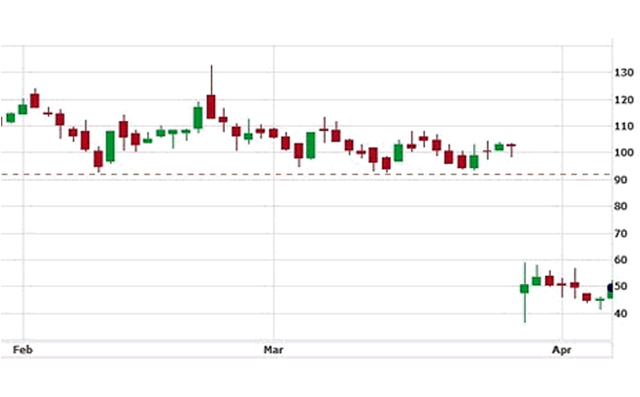How to make a Whipsaw Profit
Oct 31, 2011 at 2:18 pm in Tips and Strategies by
I’m sure you all know what a whipsaw loss is. You buy the FTSE 100 index (for example) at the 5000 price level with a protective stop order at 4900. You get stopped out, losing you £100, and the price rises again to 5000. Thinking that you stopped out for no good reason, you re-establish your long position at 5000 out of ‘fear of missing out’ on what must surely now be an up-trend. The price falls back again, triggers your stop order and loses you another £100, rises back to 5000 and you buy in again. And so on and so forth, as the index trades sideways in a 100-point range.
These losses are called “whipsaw losses” and you have notched them up by repeatedly buying high and selling low, which, as we all know, is exactly the opposite of what you should be doing.
Did you know that it is also possible to notch up one or more whipsaw profits, by selling high and buying low when the spread betting company is obliged to sell you out at your guaranteed stop price and you find that you can re-purchase immediately at a much lower gapped-down price?
Think about it in relation to the ‘gap-down’ chart I showed you a few days ago in this article where we discuss price gaps , repeated here:

Suppose you had gone long on this instrument in mid-February at a price of about 95p. As the price rose up to 130p you were able to trail your necessarily wide guaranteed stop order up to the 90p price level thereby neutralising most of your risk.
When the price gapped down at the end of March, the spread betting company had to sell you out at your guaranteed price of 90p yet could do little or nothing to prevent you from establishing a brand new position at a gapped-down price of 50p. The spread betting company has effectively taken the loss on your behalf, and if the gap subsequently closes — which it looks like it might — you will have captured a whipsaw profit of up to 40 points.
While ‘by definition’ you can’t predict which prices will gap, and therefore you can’t plan for this set-up, you can certainly try to take advantage of it if you are lucky enough to be in a position to do so. But might find that the spread betting company is a little tardy in stopping-out your original guaranteed position in this scenario, so you might look at establishing the better-price replacement position immediately on the gap-down before the old position actually closes. In some very rare cases the price might shoot right back up, the spread betting company might keep your original position in play, and you are left with two positions: one still guaranteed, and the other one having being established at a very preferential price.
This is not just some idle theory; it has happened to me. But I had to be quick enough to spot it and react to it.
Tony Loton is a private trader, and author of the book “Stop Orders” published by Harriman House.

